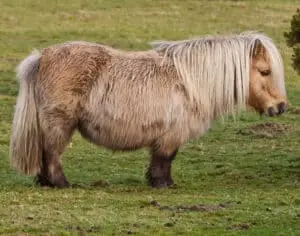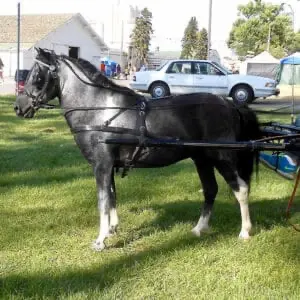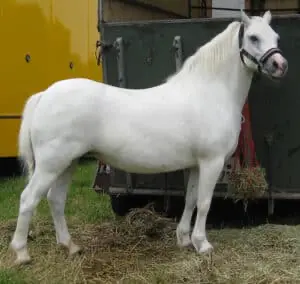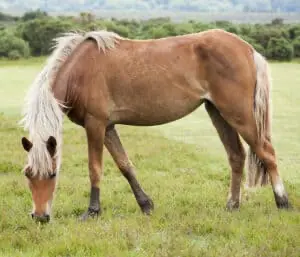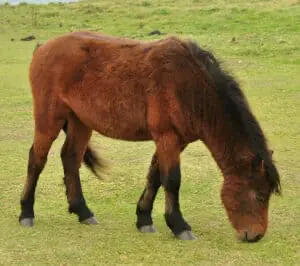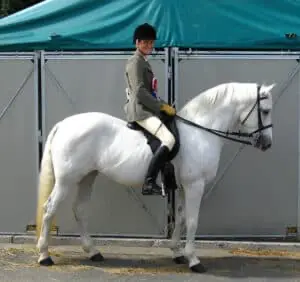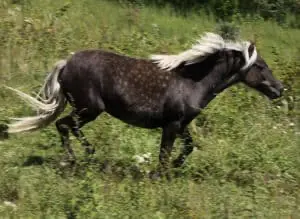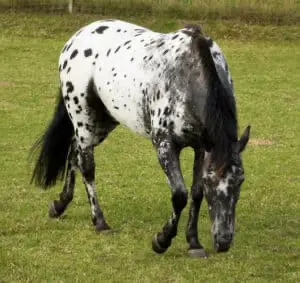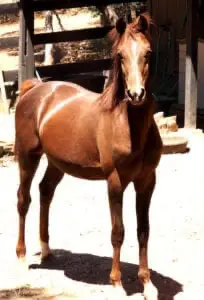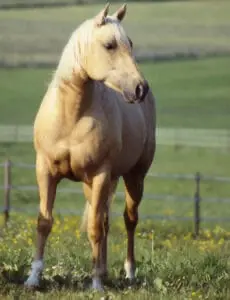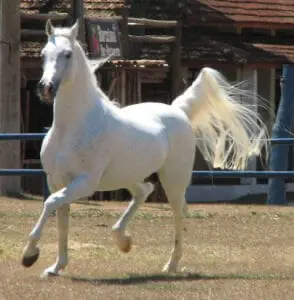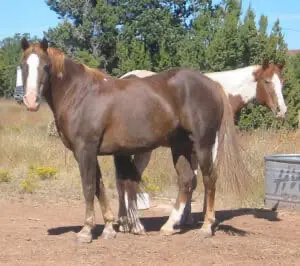While many of us have loved horses from a very young age we’ve sadly not all been lucky enough to have our own mounts as we were growing up which is one of the reasons why we don’t want our children to miss out. After all, owning a horse (or pony) at a young age is not only great fun but can also help to teach children about responsibility, instill a good work ethic, and will also help them to care for others.
What makes a good pony for a kid?
When it comes to finding that special horse or pony its important to consider not just the age, size, and experience of the horse but also of the child too. The Character of the horse should be a consideration too.
The ideal child’s pony shouldn’t be too big (especially if your child is very young) in part because it’ll be less daunting for the child but also because children are far more fearless than us and will inevitably fall off so a smaller mount will mean they’ll be closer to the ground.
Best breeds for kids
Everybody has their own opinions and preferences when it comes to horse and pony breeds but, while it will always come down to the individual horse, some breeds are more suitable for children than others which is why I decided to write this article.
Shetland Pony
Height: Ponies are always measured in inches with the limit being 42 inches (10.2hh), ponies over 34 inches (8.2hh) are registered as Standard while those under are referred to as Miniature.
Color: They can be any solid color as well as part-colored.
Character: The Shetland Pony is very intelligent and independent, they love being around children but can be a little stubborn sometimes.
Country of Origin: Shetland Isles, Scotland (UK)
Originally bred in the Shetland Isles, just off of the coast of Scotland, this plucky little pony is an ideal pony for younger children. Don’t let its small size put you off, it has the courage and strength of much bigger horses as well as the personality and confidence to match. No matter what your child’s chosen discipline is the Shetland Pony will excel thanks to its go anywhere, do anything nature.
You might think that the Shetland Pony’s little legs would make it a slow-moving breed but it’s actually pretty fast for its size, if the Shetland Pony was scaled up to the size of a Thoroughbred (and its speed was scaled up too) it would beat the Thoroughbred easily.
Interesting facts
- During the Victorian era of the late 19th century, the Shetland Pony was extremely popular with British nannies who would use them to carry the babies they were looking after. They favored the Shetland Pony because of its nature but also because they didn’t have to lift the babies too high.
- When children were banned from entering coal mines in 1847 the Shetland Pony was brought in to take their place.
- Despite its size, the Shetland Pony is actually one of the strongest breeds (in relation to size) in the world, they can quite happily carry a fully grown adult as well as pull far more than their own weight.
If you’re interested in finding out more about the Shetland Pony check out the Shetland Pony Studbook Society’s website.
American Shetland Pony
Height: The maximum height is 11.2hh (46 inches) but most American Shetland Ponies stand at around 10.2hh (42 inches).
Color: Any color except spotted is allowed.
Character: Like its ancestor, the American Shetland Pony is a tough little pony that is full of confidence. While it has lost some of its hardiness it still has a lot of endurance.
Country of Origin: USA
You might think that the American Shetland Pony and the Shetland Pony are the same breed but, although they do share a common ancestry they are in fact now two completely separate breeds that bare little resemblance to each other.
The American Shetland Pony descended from the Shetland Pony but has been refined into a slightly taller horse that has a very elegant way of moving. Since the registry was established the breed has grown in popularity with the number of registered ponies being in excess of 40,000.
Interesting facts
- Hackney Ponies, Arabians, and Thoroughbreds where all crossed with the Shetland Pony to increase the quality of the new breed, sadly though this meant that the American Shetland Pony doesn’t have the same hardiness as its ancestor.
- The American Shetland Pony is a popular riding pony that is equally suited to Western and English, but it’s also widely used in harness too as well as for racing or to pull leisure carriages.
- There are four sections to the registry, foundation, classic, modern and modern pleasure, with them have variations on height and build.
If you’re interested in finding out more about the American Shetland Pony check out the American Shetland Pony Club, Inc website.
Welsh Pony & Cob
Height: The breed is made up of four different types (or sections) each with their own height requirements:
- Welsh Mountain Pony (section A) – 12hh (48 inches) in the UK or 12.2hh (50 inches) in the USA.
- Welsh Pony (section B) – up to 13.2hh (54 inches) in the UK or 14.2hh (58 inches) in the USA.
- Welsh Pony of Cob Type (section C) – no taller than 13.2hh (54 inches).
- Welsh Cob (section D) – there’s no upper limit but ponies must be at least 13.2hh (54 inches).
Color: Any solid color is allowed as well as roan.
Character: Like many ponies, the Welsh Pony & Cob is extremely intelligent and has a friendly nature. They’re gentle ponies that are ideal for children but they are known for having a mind of their own.
Country of Origin: Wales (UK)
Consisting of effectively four different breeds there’s a Welsh section for every child regardless of their age, size or experience. The Welsh Mountain Pony, which is the smallest and to some extent the boldest. It’s just as happy under saddle as it is in harness and has plenty of stamina. The Welsh Pony (sometimes referred to as the Welsh Pony of Riding Type), while still being elegant and athletic is slightly lighter in build. The Welsh Pony of Cob Type is, as its name suggests, of a more cob type and is heavier than the two previous sections. The final type, the Welsh Cob is often considered to be a small horse rather than a large pony. It’s stocky build makes them perfectly able to carry adults as well as children.
Interesting facts
- There are around 200 Welsh Mountain Ponies living wild in the Carneddau mountains which are part of Wales’ Snowdonia National Park (which covers thousands of acres).
- Welsh Ponies and Cobs are often underestimated, despite their small size they have the power, stamina, and jumping ability of most full-sized horses.
- The Welsh Mountain Pony is believed to be the founder of all Welsh sections and its first stud was established at around 55BC by Julius Caesar. Prior to the stud being established the plucky little pony mainly lived in the mountains and was completely untamed.
If you’re interested in finding out more about the Welsh Pony & Cob checkout the Welsh Pony & Cob Society of America, Inc’s website.
New Forest Pony
Height: The maximum height is 14.2hh (58 inches) but there’s no lower limit, although ponies are rarely under 12hh (48 inches).
Color: Any color except for spotted, blue-eyed cream or paint/pinto (known in the UK as skewbald or piebald). Bay, chestnut, and gray are the most common though.
Character: The New Forest Pony is known for its kind Character and intelligence. They’re tough little ponies that have the strength of a full-size horse and are very easy to train.
Country of Origin: England (UK)
One of the eleven breeds that make up the mountain and moorland group of horses in Great Britain, these hardy ponies are descended from the ponies that lived in and around the New Forest area of Southern England as far back as 500,000BC and while other breeds have been used in its development, DNA tests have shown that the New Forest Pony has still retained a lot of the characteristics of these ancient ponies.
Today’s New Forest Pony hasn’t lost any of its hardiness which is, in part, due to the fact that many ponies are raised within the forest and live all of their early life roaming freely in all weathers and with a range of other grazing animals such as pigs, deer, and cattle.
Interesting facts
- Around two thousand ponies still live in a semi-wild state within the New Forest National Park and are all owned by the New Forest Commoners who exercise their ancient right to graze them within the park. When registered these ponies are referred to as forest bred.
- During the 1930s a number of Arabian horses (along with other breeds) were turned loose into the forest. This is why a lot of ponies still have the Arabian’s distinctive dished face. It’s also believed the dun coloring that some ponies have is due to the Highland Ponies that were also used during this time.
- Despite being largely considered as a child’s mount the New Forest Pony is perfectly happy carrying adults too.
If you’re interested in finding out more about the New Forest Pony check out the New Forest Pony Breeding & Cattle Society’s website.
Dartmoor Pony
Height: The average pony stands at around 12hh (48 inches) but they’re not allowed to be any taller than 12.2hh (50 inches).
Color: Any solid color is allowed but brown, bay, black, and chestnut are the most common.
Character: The Dartmoor Pony is famous for being gentle, reliable, and extremely calm. Their native wild habit has helped them to evolve into almost bombproof ponies.
Country of Origin: England (UK)
Another one of Great Britain’s mountain and moorland breeds, the Dartmoor Pony, like the New Forest Pony, has lived in a semi-wild state for thousands of years. This way of living has helped to make them the tough and hardy ponies they are today, they’re perfectly capable of carrying most adults and where even used by the prison guards at Dartmoor’s high-security prison to carry prisoners as recently as the late 1960s.
Sadly though, like so many of Great Britain’s native breeds, the Dartmoor Pony is at risk, shockingly there are fewer than 500 breeding ponies left which means that the Rare Breeds Survival Trust has classed them as endangered.
Interesting facts
- The earliest known mention of the Dartmoor Pony was made back in 1012AD by a Saxon bishop called Awlfwold of Credition who referenced them in his will.
- In 1898 the Polo Pony Society (now the National Pony Society) began to keep detailed records of all of the United Kingdom’s native breeds. The society entered five stallions and seventy-two mares into the first studbook. Today’s Dartmoor Ponies are identical to the first ponies in every way except for height (today’s ponies are smaller).
- The Dartmoor Pony is sadly classed as an endangered species with around 300 registered ponies left.
If you’re interested in finding out more about the Dartmoor Pony check out the Dartmoor Pony Society’s website.
Connemara Pony
Height: Most ponies will stand between 13hh (52 inches) and 14.2hh (58 inches) although in the USA they’re slightly bigger and while they can be as small as 13hh (52 inches) they can stand up to 15hh (60 inches).
Color: Any solid color is allowed but gray, bay, brown, black, and dun are the most common.
Character: The Connemara Pony is extremely intelligent and full of courage. It has a kind nature and its gentle character makes it ideal for children of all ages.
Country of Origin: Ireland
Not much is known about the origins of the Connemara Pony but its believed that this ancient breed is descended from the Celtic ponies that were used, as far back as 5000BC, to pull war chariots (as well s race them) in Ireland. After then their history becomes a little hazy until around 400 years ago when merchants were trading between Ireland and the Iberian Peninsula, amongst other things horses were also traded which lead to the introduction of Andalusian, Arabian, and Barb blood.
Despite thriving during the seventeenth and eighteenth centuries, the Irish potato famine of the 1840s saw the breeds numbers drop drastically. This resulted in a deterioration of the breed’s quality but thankfully this was reversed with further Arabian blood and the introduction of Welsh stallions too.
Interesting facts
- Despite its ancient heritage the Connemara Pony, as a recognized breed, is less than a hundred years old. It was officially classed as a breed in its own right in 1926 when 30 local breeders came together to protect and develop this hardy pony.
- Originally bred around Co. Galway’s Lough Corrib region on the west coast of Ireland, this area is known as the Connemara coast which is where the breed gets its name from.
- The Connemara Pony is world-famous for its sure-footedness which it can attribute to the region’s boggy terrain. This has also helped to make them such good mounts on rough and uneven ground.
If you’re interested in finding out more about the Connemara Pony check out the Connemara Pony Breeders’ Society’s website.
Highland Pony
Height: While there’s no lower limit most ponies will stand above 13hh (52 inches), although they’re not allowed to be taller than 14.2hh (58 inches).
Color: Dun is the most common color but any solid color is allowed. A lot of ponies also have a dorsal stripe and zebra markings.
Character: The Highland Pony is a strong horse with plenty of stamina, they have a kind temperament and can easily be handled by children.
Country of Origin: Scotland (UK)
Believed to have descended from the ponies that lived in Scotland after the last Ice Age, the Highland Pony has, over the years, been influenced by a variety of other breeds such as the Clydesdale, Norwegian Fjord, Arabian, and even a number of trotting horses.
During the First World War, their calm nature and common sense made then highly desirable as war horses and after the war, unlike a lot of other horses, their numbers grew as surefooted ponies were needed to plow the fields. As the agricultural industry became more mechanized the breed adapted and became popular as a riding pony, thanks, in part, to their unflappable nature and comfortable way of covering ground. Today though it’s a different story, with their numbers being somewhere between 500 and 900 worldwide this trustworthy breed is classed as being vulnerable by the Rare Breeds Survival Trust.
Interesting facts
- The late Queen Elizabeth II of Great Britain was a huge fan of these hardy ponies and had a stud breeding them at Balmoral Castle in Scotland. Being bred as working ponies they all have special saddles that are designed to allow them to carry deer (often weighing in excess of 100 kgs (220 lb)).
- While you can clearly see the influence of breeds such as the Norwegian Fjord you might be surprised to know that the Percheron also played a role in the development of the modern Highland Pony. During the seventeenth century, King Louis XII of France gave a number of Percheron stallions to Scotland to help develop the breed.
- Like many of the other mountain and moorland breeds, the Highland Pony has a double-layered coat during the winter that will help to keep it dry but also to protect it from the harsh wind. This is shed during the summer to prevent them from overheating.
If you’re interested in finding out more about the Highland Pony check out the Highland Pony Society’s website.
Pony Of The Americas
Height: In 1986 the height of the breed was increased and now they’re anything between 11.2hh (46 inches) and 14hh (56 inches) is accepted, before 1986 the maximum height was 13.2hh (54 inches).
Color: Any spotted coat pattern with a white sclera, mottled skin, and striped hooves (you can read more about the different patterns here).
Character: The Pony of the Americas is easy to handle and has a friendly nature. They have plenty of stamina and are highly intelligent ponies.
Country of Origin: USA
The Pony of the Americas (or POA as its also known) was developed especially as an in-between pony for children that were too small for full-sized horses whilst also being too big for many ponies, although the Shetland Pony was originally used that was dropped from the breeding program in 1963 in favor of larger pony breeds such as the Welsh Mountain Pony. A number of horse breeds, such as the Arabian, Appaloosa, and Quarter Horse were also used to make the breed a versatile western utility pony that is capable of carrying children and adults alike (although only children can show the pony under saddle).
Sometimes referred to as a small Appaloosa, the Pony of the Americas has all of the versatility of the Appaloosa and has combined that with the willingness of the Shetland and Welsh Mountain Ponies. This has resulted in an all-round great pony that is keen to please.
Interesting facts
- The Pony of the Americas’ development was a pure accident when an Appaloosa had been accidentally bred to a Shetland Pony stallion. The resulting foal, known as Black Hand because fo the black spotting on his rump, was so good around children that his owner, Les Boomhower, decided to create a new breed especially for children.
- The breed has a tremendous amount of stamina that was demonstrated in the 1960s when a pony called Apache Wampum completed a seven hundred mile ride from Columbus Junction, Iowa to Cheyenne, Wyoming.
- While the Pony of the Americas was developed as a Western riding and stock pony its capable of pretty much anything and excels at dressage, jumping, and even driving.
If you’re interested in finding out more about the Pony Of The Americas check out the Pony Of The Americas Club, Inc website.
Morgan
Height: The Morgan can be anything from 14.1hh (57 inches) to 15.2hh (62 inches).
Color: Any color is allowed but most horses are either chestnut, black, brown, or bay. The most common color though is black.
Character: The Morgan is a dependable breed that’s courageous and is exceptionally strong. They are gentle horses that don’t spook easily.
Country of Origin: USA
The Morgan breed is unusual in that every single horse can trace back to just one single horse. Known as Figure, the horse, who was often referred to as Justin Morgan’s Horse after his owner, stood at 14hh (56 inches) and was said the have extraordinary versatility and talent. He was entered into log pulling contests during the 1790s and was able to pull logs that many draft horses were unable to pull. Little is known about Figure’s breeding but it’s thought that he descended from the Friesian and Welsh Cob, recent DNA tests have also shown that the breed is closely related to the Canadian Horse.
Over the years two types of Morgan have evolved: the Park Horse, a high stepping trotter that was bred to be ridden in parks, and the Pleasure Horse. While the Park Horse was developed for show, the Pleasure Horse, on the other hand, is better suited to trail riding but also has a great jump.
Interesting facts
- The Morgan has played a role in the development of many other breeds, such as the Quarter Horse, Tennessee Walker, and the American Standardbred.
- The trotting horse that can be seen on many weather vanes is a silhouette of Ethan Allen who was the fastest trotting stallion of his day. He was said to have been incredibly graceful while obviously been extremely fast.
- Some people class the Morgan as a gaited horse but, while the trot is genetic rather than trained it can’t be guaranteed.
If you’re interested in finding out more about the Morgan check out the American Morgan Horse Association’s website.
Quarter Pony
Height: The average height is 13.2hh (54 inches) but ponies can stand between 11.2hh (46 inches) and 14.2hh (58 inches).
Color: Any color is allowed, including Appaloosa and Paint coloring.
Character: The Quarter Pony is confident, bold, fast, and highly intelligent but also has an amazing amount of stamina. They’re strong ponies that are very loyal and can easily be handled by children.
Country of Origin: USA
The breed came about because, during the early days of the American Quarter Horse Association (AQHA), there was a minimum height requirement for the Quarter Horse. This restriction of 14.2 (58 inches) meant that any horses that weren’t quite tall enough didn’t qualify for registration, as a result of this the American Quarter Pony Association was established to register these ponies. Today the AQHA doesn’t have a minimum restriction so many Quarter Ponies are double registered. Now a separate breed, the Quarter Pony has also been influenced by other popular American stock horse breeds, such as the Appaloosa, Pony of the Americas, and the Paint Horse.
Many people still refer to the breed as a small Quarter Horse which is a testament to their versatility and workability. They’re capable of doing everything their bigger cousins can which is why they’re a great choice for any child.
Interesting facts
- The Quarter Pony is extremely muscular which means that they can happily carry most adults all day without tiring.
- A horse with at least one parent being registered with an approved breed registry will automatically qualify for registration, regardless of the breeding of their other parent. The approved registries are the Quarter Horse, Quarter Pony, Appaloosa, Pony of the Americas, and the Paint Horse.
- The Quarter Pony is popular in steer wrestling (or bulldogging) and rodeo competitions.
If you’re interested in finding out more about the Quarter Pony check out the International Quarter Pony Association’s website.
Arabian
Height: While the maximum height is 16hh (64 inches) most Arabians will stand at 14.3hh (57 inches).
Color: Most colors are allowed with bay, chestnut, black, and grey being the most common. Roan and Sabino can also be found with white horses occurring only very occasionally.
Character: The Arabian is highly intelligent and can easily be handled by children. It’s famed for its friendly disposition.
Country of Origin: Arabian Peninsula
Hear me out before you dismiss the Arabian as a suitable breed for children, yes they do have a reputation for being highly strung (and of course there will always be those that are completely bonkers for want of a better word) but as a rule, they’re gentle horses that have a kind nature and are extremely loyal and affectionate. In fact, the Arabian is so gentle and calm that the United States Equestrian Federation allows children to show stallions in most classes (including ones that are limited to under 18s).
Arabians are highly intelligent, quick learners and are fast horses that aren’t afraid of anything which is why I personally think they do make good breeds for children, although I would add the caveat that the child shouldn’t be too young.
Interesting facts
- As one of the oldest breeds in the world, the Arabian has helped to influence many other breeds including the Quarter Horse, Morgan, and the Thoroughbred.
- The Arabian has 17 ribs instead of the 18 that other breeds do and it’s thought that this helps to improve their endurance and stamina.
- The 1st US president, George Washington, was the first person to bring the Arabian horse to America.
If you’re interested in finding out more about the Arabian check out the Arabian Horse Association’s website.
Grade Horse/Pony
Height: Any height.
Color: Any color.
Character: Due to the unknown breeding the nature and temperament of a grade horse or pony can be extremely varied.
A grade horse or pony is essentially any pony who’s breeding is either significantly mixed, unknown, or unidentifiable but that doesn’t mean that they’re of a poorer quality to a purebred pony, in fact, many grade ponies are dark horses, so to speak.
Interesting facts
- If a pony’s registration papers are lost and he doesn’t have any identifiable markings (such as a brand or tattoo), or doesn’t have a microchip then he’ll automatically be classed as a grade horse or pony.
- The most famous grade horse was bought in the 1950s for just $80, known as Snowman, he was soon turning heads in show jumping and went on to become an extremely successful jumper. A movie was later made about his rags to riches story and in 1992 he was entered into the Show Jumping Hall of Fame.
Further reading
- Is leasing better than owning?
- Best breeds for barrel racing
- Best breeds for show jumping
- The world’s most unusual breeds
- Best trail riding breeds
- Questions to ask before buying a horse
- Buying a horse at auction
- How to care for a horse
- The difference between Western & English
- Why riding helmets are so important
I hope you found this article helpful. If you did I’d be grateful if you could share it please as it would really help me.
Recommended products
Over the years I have tried hundreds of different horsey products, from various blankets and halters to different treats. Some I’ve loved, others I’ve hated but I thought I’d share with you my top all-time favorite products, the ones I never leave the yard without. I’ve included links to the products (which are in no particular order) that I really think are great.
- Horse Knots by Reference Ready – If you’re like me and enjoy pocket reference guides then you’ll love this knot tying guide. These handy cards can easily fit in your pocket or attach to the saddle for quick reference. They’re waterproof, durable and are color coded to make them easy to follow.
- Mane ’n Tail Detangler – Even if you never show your horse you’ll need to detangle his tail from time to time (and possibly his mane too) which is always a challenging chore! I’ve found that if I run a little bit of detangler through my horse’s tails every few days it stops them from getting matted up and makes combing them easy, even if they’re coated in mud. I don’t know if I should admit to this or not but it also works wonders on my hair.
- TAKEKIT Pro clippers – Over the years I’ve tried a lot of different clippers and while some were obviously better than others I found these to be by far the best. They are heavier than a lot of other clippers but for me, that’s a good thing, it makes them feel more sturdy and hardwearing. On top of that they have a range of speeds so are just as good for clipping your horse’s back as they are his face. I also like the fact that they come in a handy carry case but that’s not for everybody. The company that makes them is super good and incredibly helpful too, a real bonus these days. The only thing I wasn’t keen on was the fact that it doesn’t come with any oil, but that’s not a major problem as it’s not difficult to buy lubricant.
- Shire’s ball feeder – There are so many boredom buster toys out there but I like to use these every day, regardless of whether or not my horses are bored. I find that it helps to encourage my horses to problem solve by rewarding them with treats (or pieces of fruit) but it also mimics their natural grazing behavior which helps to keep them calm and de-stressed.
- Horse safe mirror – This is a strange one that many people are surprised about but I like to put horse safe mirrors in the trailers as well as in the quarantine stalls. It helps to prevent the feeling of isolation by giving the impression of other horses being around. Being herd animals horses can get extremely stressed when they feel that they’re on their own but with these stick-on mirrors, they believe that at least one other horse is with them.
- Rectal thermometer – I know this isn’t glamourous at all but it’s vital for your horse’s well-being to be able to check their temperature and a rectal thermometer is the easiest way of doing this which is why I’ve added it to the list.
Shopping lists
I’ve also put together a few shopping lists of essential items that I’ve found helpful over the years. I’ve broken the lists down into different categories rather than put everything in one massive list 😉

